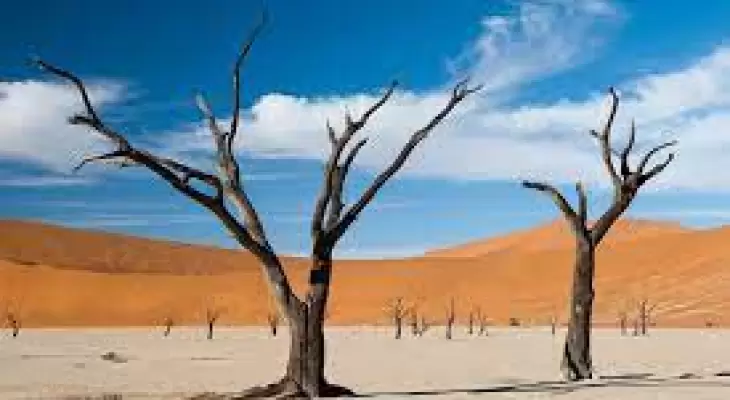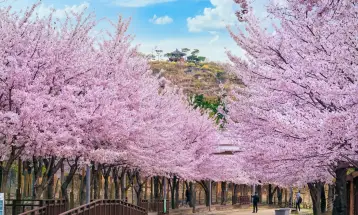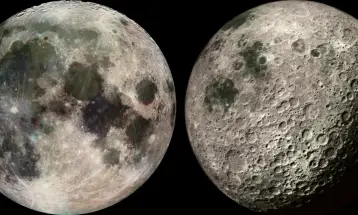Namib-Naukluft National Park, a Beautiful Place In Namibia

Holiday Ayo - The Namib-Naukluft Park is a national park in western Namibia, situated between the coast of the Atlantic Ocean and the edge of the Great Escarpment.
It encompasses part of the Namib Desert (considered the world's oldest desert), the Naukluft mountain range, and the lagoon at Sandwich Harbour. The best-known area of the park and one of the main visitor attractions in Namibia is Sossusvlei, a clay pan surrounded by sand dunes, and Sesriem, a small canyon of the Tsauchab.
With an overall area of 49,768 km2 (19,216 sq mi), the Namib-Naukluft National Park was at the time of its last expansion the largest game park in Africa and the fourth largest in the world. It consists of a strip of land on the Atlantic Ocean, including 1,609 kilometers (1,000 mi) of the sea, that extends roughly 600 kilometers (370 mi) north-to-south from the Swakop River to the B4 road to Luderitz.
A surprising collection of creatures survives in the hyper-arid region, including snakes, geckos, unusual insects, hyenas, gemsboks, leopards, African wildcats, cape foxes, baboons, caracals, bat-eared foxes, and jackals.
The region is characterized by high, isolated inselbergs and kopjes (the Afrikaans term for rocky outcrops), made up of dramatic blood-red granites, rich in feldspars and sandstone. The easternmost part of the park covers the Naukluft Mountains.
More moisture comes in as a fog off the Atlantic Ocean than falls as rain, with the average 106 millimeters of rainfall per year concentrated in the months of February and April.
The winds that bring in the fog are also responsible for creating the park's towering sand dunes, whose burnt orange color is a sign of their age. The orange color develops over time as iron in the sand is oxidized, like rusty metal; the older the dune, the brighter the color.
These dunes are the tallest in the world, in places rising more than 300 meters (almost 1000 feet) above the desert floor. The dunes taper off near the coast, and lagoons, wetlands, and mudflats located along the shore attract hundreds of thousands of birds.
'Namib' means "open space", and the Namib Desert gave its name to form Namibia – "land of open spaces".








Leave a comment